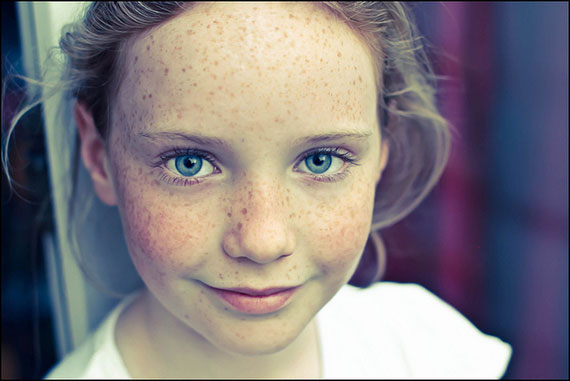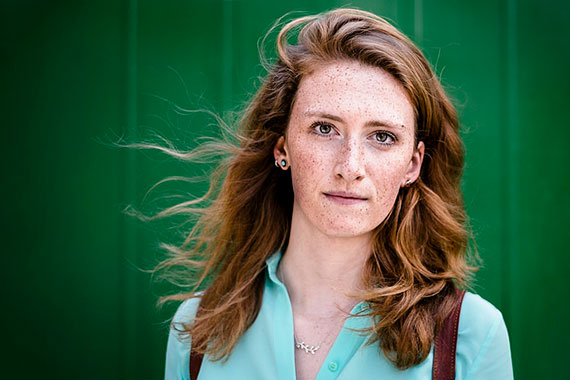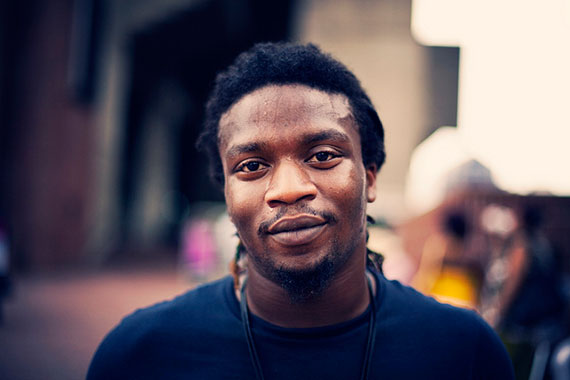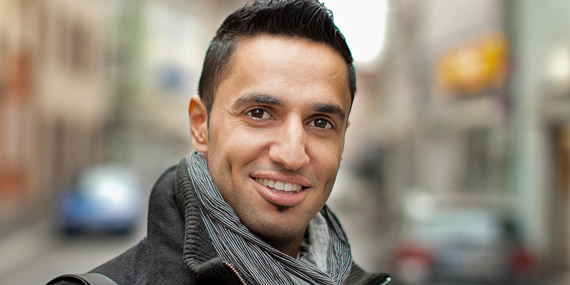This article is intended for the casual shooter who is just starting out or has been shooting for a while, but has room for improvement. Capturing portraits, especially good portraits, is no easy task by any stretch of the imagination. However, making very small changes to your shooting habits will result in immediate improvements to your portraits.
There are some very basic things that most people simply ignore when they shoot, and these very basic things make all the difference. First, let me say this:
The difference between a photograph of a person and a portrait is the background.
The main subject of every portrait is the face, and it should be the element given most attention. I will explain what I mean in more detail, so read on.
Use a Wide Aperture
OK, I know I am not exactly discovering a new planet here, but if you are using a point-and-shoot camera, or are just starting out with a DSLR camera, instead of using the Full Auto setting, switch over to Portrait mode. Why? Because the camera will adjust settings; it will set the lens to a wide aperture size. A big aperture is best for shooting portraits, because the background blur is increased. We almost always want our subject to stand out from the background, not blend in with it.

Photo by Elvin; ISO 500, f/2.8, 1/100-second exposure.
Get Closer
While this may sound silly, this is one of the most important aspects of capturing a good portrait. There are several reasons for getting closer to your subject, no matter who you are shooting. Remember, because the face is of primary significance in your photograph, it will occupy most of the frame. Getting close will let you fill the frame, even if you are shooting with a small point-and-shoot camera that does not offer a telephoto capable zoom.
More importantly, when you come in close, instead of using a zoom, you decrease the depth of field, which, in simple terms, is the length between your focus point and some point in the distance that is in focus. What this means is that when you come in close, you capture the face in sharp focus, but the closer you get the shallower the depth of field becomes. This, in effect, blurs out the background, and because our eyes always look for features that are in focus, the facial features immediately stand out; the background is no longer distracting.
Choose a Better Background
This is a no-brainer, but how often do we see otherwise good portraits shot against distracting or garish backgrounds? Do not make that mistake. While you can blur out the background quite a bit by getting close to your subject, a background that is uncluttered and does not appear distracting offers a better portrait.
Look for solid color backgrounds. Consider a background that is complementary to your subject’s skin tone, or if you are shooting a full body shot, and a torso shoot, look for colors that complement your subject’s clothing.

Photo by barbasboth; ISO 400, f/1.8, 1/2000-second exposure.
Look for texture. Textures improve the image overall and add a feel of dimensionality. Try to keep your subject far enough from the background to throw it sufficiently out of focus. Use the LCD on your camera to see whether the background is too distracting. If it is in sharp focus, move your subject further away from it, if possible, or get closer yourself.

Photo by David Salafia
Look for backgrounds that are not too dark or too bright. Too dark is always better than too bright, so if your choices are slim, opt for darker backgrounds.
With these very simple tips, you will no doubt improve your portraits quite a bit. Remember, there are always more things that you can do to improve, so do not stop here. These are just a few simple solutions to help you address some common problems. In time, this will become second nature, and you will be looking for more advanced techniques.
About the Author:
Written by Professional Photographer Sam Zaydel, who recently started an Online Photographer Community (worldonpaper), to allow photographers freedom to share their most favorite shooting locations, regardless of the subject matter and place. Consider joining this community, if you would like to contribute your favorite locations, as well as discover new places from other members.
Go to full article: Tips to Improve Your Portrait Photography in No Time
What are your thoughts on this article? Join the discussion on Facebook
PictureCorrect subscribers can also learn more today with our #1 bestseller: The Photography Tutorial eBook
The post Tips to Improve Your Portrait Photography in No Time appeared first on PictureCorrect.
from PictureCorrect https://ift.tt/2mwwLu5
via IFTTT








0 kommenttia:
Lähetä kommentti